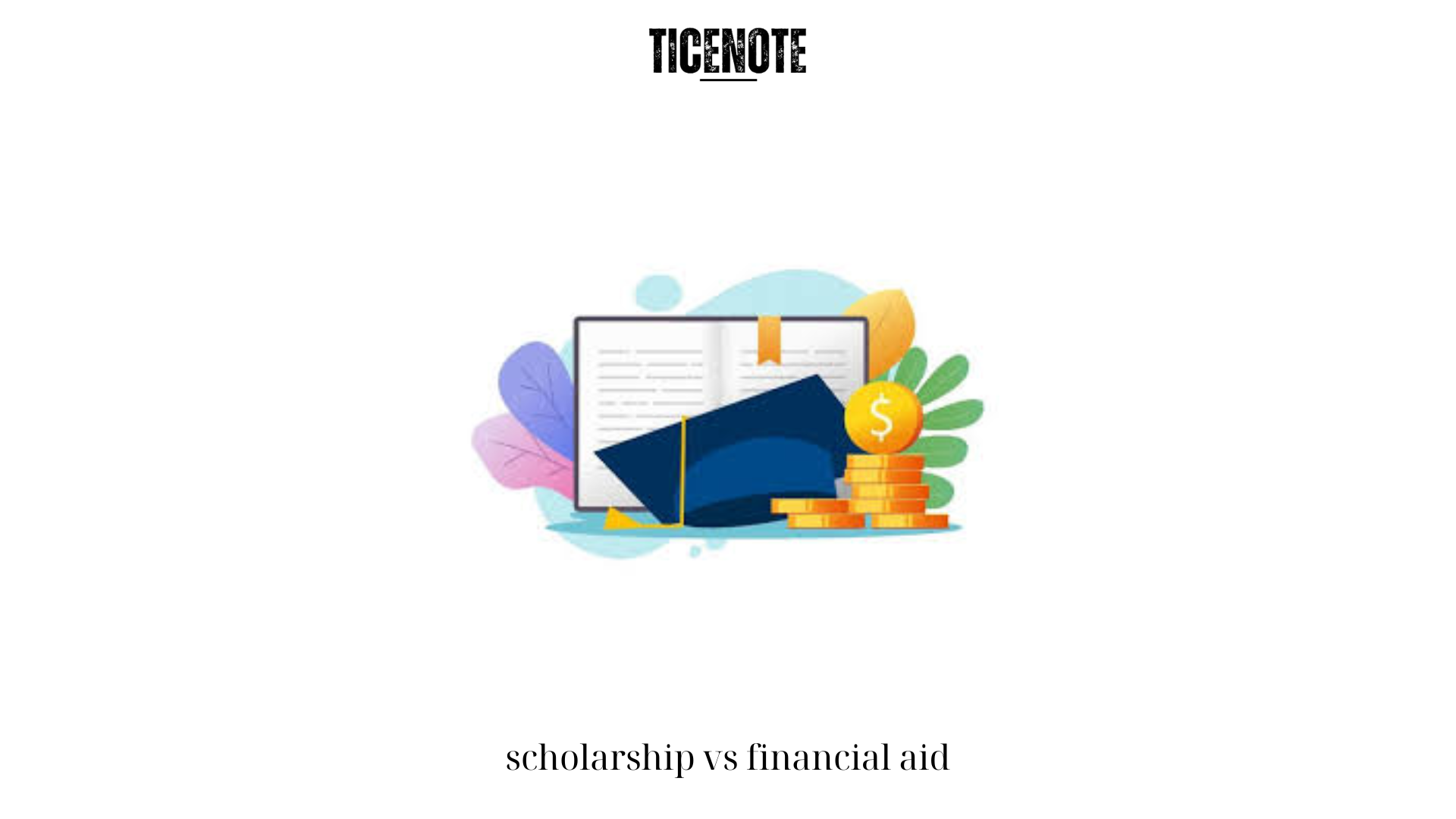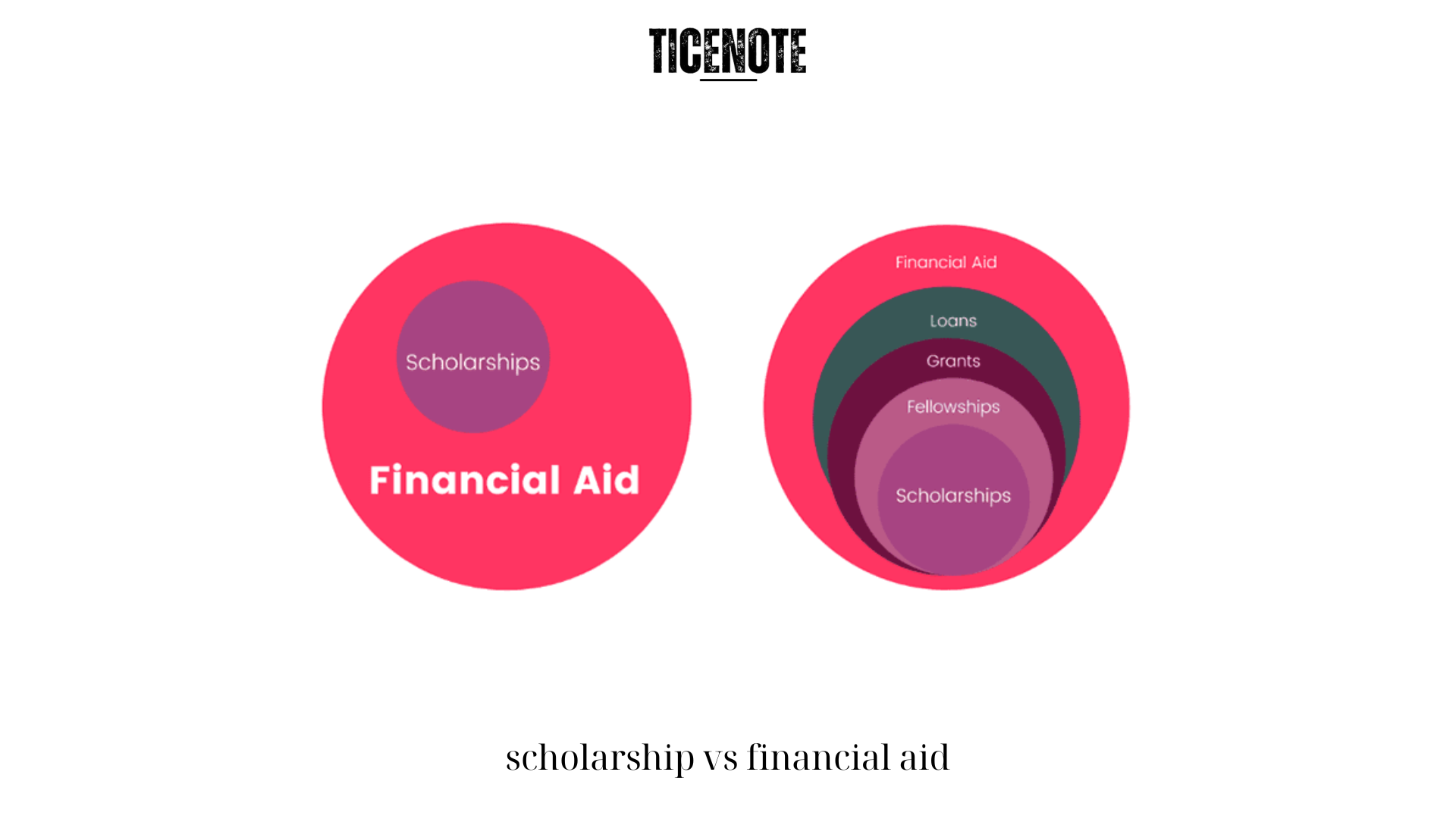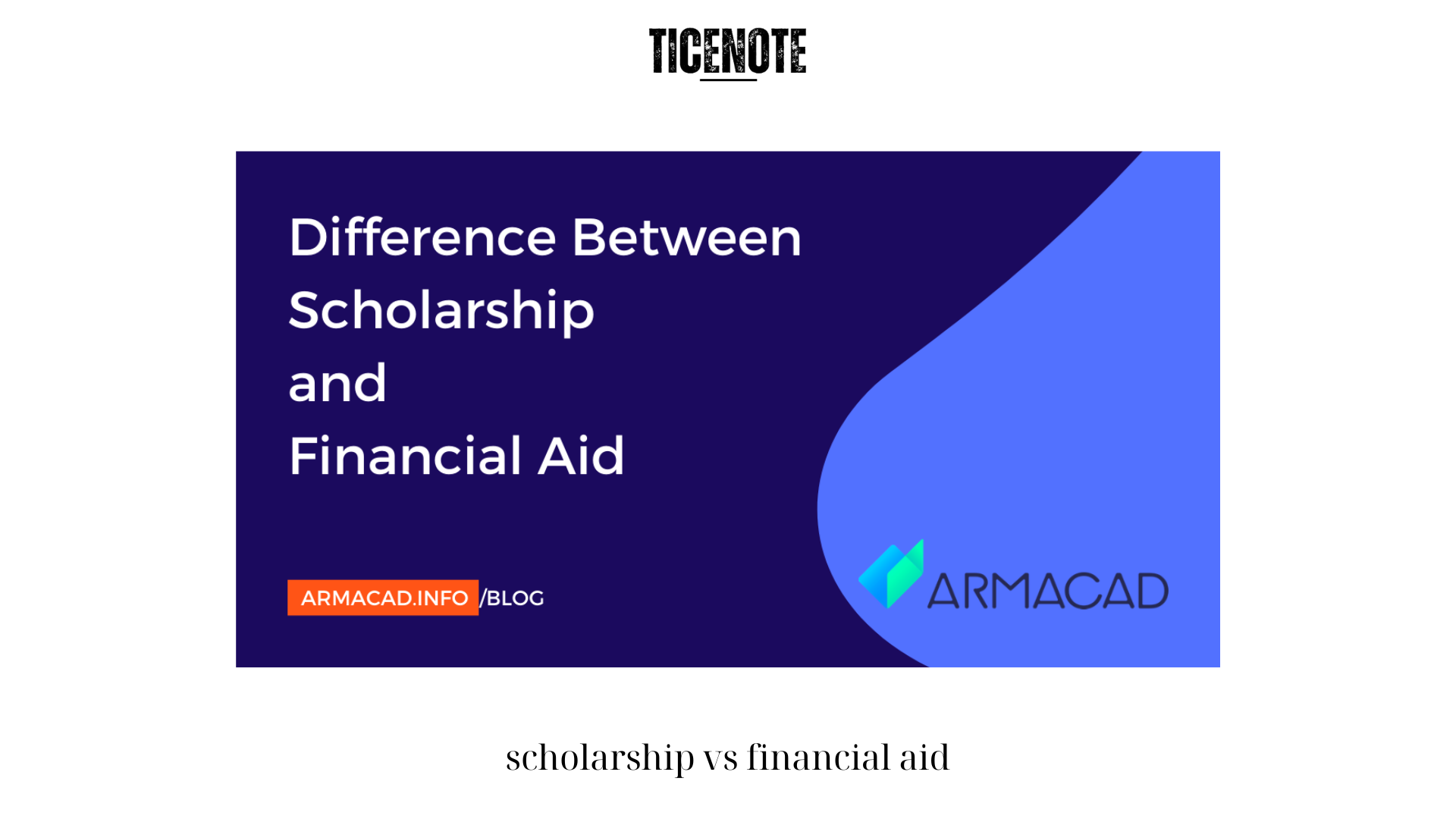When it comes to financing your education, there are various options available to help alleviate the financial burden. Two commonly discussed options are scholarships and financial aid. While both can provide financial assistance for students, it’s essential to understand the key differences between the two. In this article, Ticenote will explore the distinctions between scholarship vs financial aid, shedding light on how they function and the benefits they offer.
Scholarship vs Financial Aid: Understanding the Key Differences

By understanding the differences between scholarship vs financial aid, students can make informed decisions and take advantage of the available resources to pursue their educational goals.
Scholarships are often merit-based awards granted to students based on their academic achievements, talents, or specific criteria set by the scholarship provider. These scholarship vs financial aid are typically competitive, with applicants having to meet specific eligibility requirements and possibly undergo an application process. Scholarships can be offered by a variety of sources, including educational institutions, private organizations, nonprofits, and government entities.
One of the primary advantages of scholarship vs financial aid is that they are usually awarded based on merit rather than financial need. This means that recipients are recognized for their exceptional academic performance, athletic abilities, artistic talents, community service, or other noteworthy accomplishments. Scholarships can provide recognition, prestige, and a sense of achievement, in addition to financial support.
Financial aid, on the other hand, is a broader term encompassing various forms of assistance, including scholarships. Unlike scholarships, financial aid can be need-based, taking into account a student’s or family’s financial circumstances. It aims to bridge the gap between the cost of education and the resources available to the student. Scholarship vs financial aid can come in the form of grants, loans, work-study programs, or a combination of these.
Grants are a type of financial aid that does not require repayment. Scholarship vs financial aid are often awarded based on financial need, and eligibility is determined by factors such as income, family size, and the cost of attendance. Grants can be provided by federal or state governments, as well as educational institutions or private organizations. They serve as a means of making education more accessible for students who may not have the financial means to cover the full cost of tuition and related expenses.

Loans, another form of scholarship vs financial aid, differ from scholarships and grants in that they must be repaid with interest. Loans can be obtained from various sources, such as the federal government, private lenders, or educational institutions. They can be subsidized or unsubsidized, with subsidized loans not accruing interest while the student is enrolled in school or during deferment periods. Loans can provide immediate financial assistance, but it’s important to consider the long-term implications and the responsibility of repayment.
Work-study programs are yet another component of scholarship vs financial aid. These programs provide students with part-time job opportunities, often on campus, allowing them to earn money to contribute to their educational expenses. Work-study programs can provide valuable work experience, flexibility in scheduling, and the ability to develop essential skills while pursuing a degree.
While scholarship vs financial aid differ in their eligibility criteria and terms, they both serve the purpose of making education more accessible and affordable. Scholarships primarily focus on rewarding merit, while financial aid takes into account financial need. It’s worth noting that some scholarships may consider financial need as a secondary factor, but the primary emphasis is on recognizing and rewarding the achievements and potential of the student.
Another notable distinction is the source of funding. Scholarship vs financial aid can be funded by a range of entities, including educational institutions themselves, private organizations, community foundations, or government agencies. Financial aid, on the other hand, can be provided by federal or state governments, educational institutions, or private lenders, depending on the type of aid.
When considering scholarship vs financial aid, it’s important for students and their families to research and explore all available options. This includes seeking information from financial aid offices, scholarship databases, and relevant organizations. Understanding the specific requirements, deadlines, and application processes for scholarships and financial aid is crucial to maximize the chances of securing assistance.
It’s worth mentioning that scholarship vs financial aid can often be combined, allowing students to access multiple sources of funding. For example, a student may receive a scholarship based on academic performance and also be eligible for need-based grants or loans. By leveraging both scholarships and financial aid, students can mitigate the financial burden of education more effectively.

In conclusion, scholarships and financial aid are critical resources for students seeking to finance their education. While scholarships are often merit-based and recognize exceptional achievements, financial aid encompasses a broader range of assistance, including need-based grants, loans, and work-study programs. By understanding the differences between scholarship vs financial aid, students can make informed decisions and take advantage of the available resources to pursue their educational goals.
